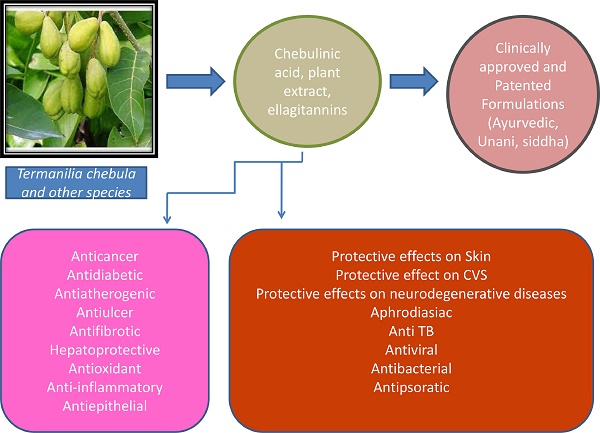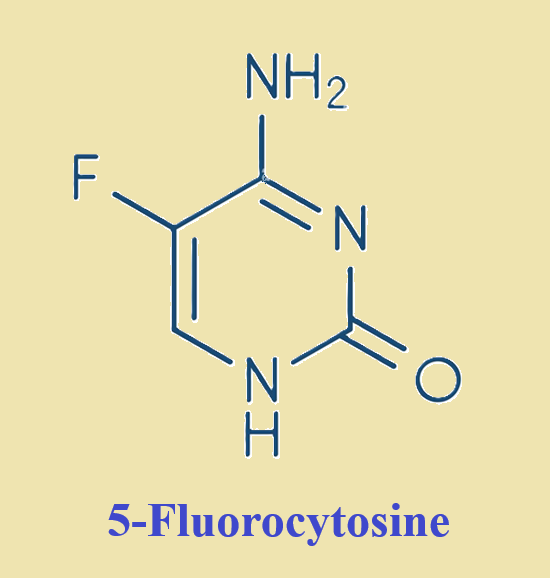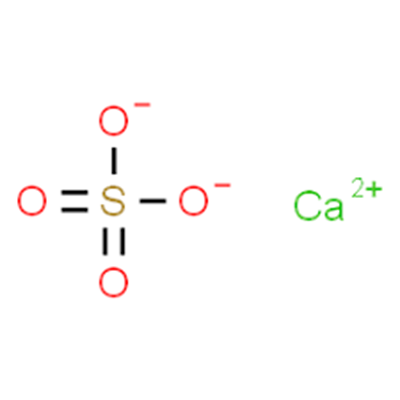What are the benefits of Chebulinic acid?
Feb 6,2024
Chebulinic acid, an ellagitannin found commonly in Terminalia chebula, has been used extensively to traditionally treat diverse eras of ailments. Chemically it is 1,3,6-tri-O-galloyl-2,4-chebuloyl-β-d-glucopyranoside belonging to a class of hydrolysable tannins. It is a faint yellowish crystalline powder, freely soluble in organic solvents (like alcohol, ethyl acetate, etc.) and sparingly soluble in water. Chebulinic acid is the primary coloring component of the dye (brown color) prepared from the dried fruit powder of Terminalia chebula.
Traditionally, the fruit part of the plant (Terminalia chebula) is known as Harad and was known to cure all diseases and eliminate waste from the body, according to Ayurveda. In Tibet, it was also known as the King of Medicine because of the extraordinary power of healing.

1. Anticancer Activity
Chebulinic acid is a natural multi-target antitumor agent with promising therapeutic potential. It represents potent pro-apoptotic, anti-proliferative, and anti-migratory effects in colorectal carcinoma cell lines. The antitumor mechanism is probably related to the PI3K/AKT and MAPK/ERK pathways.
2. Oxidative stress
Chronic neurodegenerative diseases and acute brain injuries are characterized by neuronal cell death caused by glutamate-induced oxidative stress and excitotoxicity. Chebulinic acid significantly reduced the glutamate-mediated HT22 cell death by inhibiting Ca2+ influx and intracellular reactive oxygen species (ROS) production. It prevents the phosphorylation of mitogen-activated protein kinases (MAPKs) and increases the anti-apoptotic Bcl-2 protein expression by inhibiting pro-apoptotic Bax.
3. Anti-fibrotic activity
Triphala and its major components (chebulinic acid and chebulagic acid) showed significant anti-fibrotic activity against choroid-retinal endothelial cells (RF/6A) in managing Diabetic retinopathy. Alcoholic extracts of Triphala (50 μg/ml), chebulinic acid, and chebulagic acid at 10 μM significantly reduced the TGFβ1 induced pro-fibrotic genes (αSMA and CTGF) expression by inhibiting ERK phosphorylation. In addition, the in silico docking studies also showed that both chebulinic acid and chebulagic acid possess favorable binding energy to act on the TGFβ receptor as a result of inhibition in the downstream signaling.
4. Anti-atherogenic Activity
It activates the PDGF-BB signaling and Akt pathways, blocks the PDGF-BB-induced phosphorylation and extracellular signal-regulated kinase (ERK), and reduces the sprout outgrowth development of VSMCs.
5. Anti-ulcer activity
Chebulinic acid showed remarkable anti-ulcer activity against cold restraint (62.9%), aspirin (55.3%), alcohol (80.67%), and pyloric ligation (66.63%) induced gastric ulcer models in rats.
6. Anti-tuberculosis Activity
Chebulinic acid was found to be a most potent inhibitor of Mycobacterium DNA gyrase with significantly high extra precision (XP) docking scores, −14.63, −16.46, −15.94, and −15.11 against wild type and the three most prevalent variants respectively.
7. Antiviral
Chebulinic and chebulagic acid were recognized as novel influenza A virus (IAV) replication inhibitors. They exhibit no inhibitory activity against virus replication during the IAV entry or RNA replication phase in the virus-based infection assay. However, they represent significant inhibition in the neuraminidase-mediated viral release in the viral release inhibition assay and neuraminidase inhibition assay. In addition, the susceptibility against oseltamivir-resistance mutation NA/H274Y of neuraminidase suggests both promising new neuraminidase inhibitors, which may further be developed as novel antiviral agents against IAVs.
8. Anti-HIV Activity
Chebulinic acid and punicalin showed anti-HIV activity by blocking the binding of rgp120 with CD4. Apart from this, these compounds were found to be nontoxic with the stimulation of human peripheral blood lymphocytes. Ethanolic extract (50%) of T. chebula, chebulagic, and chebulinic acids showed significant antiviral potential against the sexually transmitted herpes simplex virus-2 (HSV-2) infection by inhibiting the virus attachment and penetration with the host cells.
9. Antidiabetic activity
The antidiabetic potential of CA is caused by dual inhibitors of PTPN9 and PTPN11, which results in increased glucose uptake through activation of the AMPK (AMP-activated protein kinase) signaling pathway. This study suggests chebulinic acid (CA) could be used as a potential therapeutic agent for managing type 2 diabetes.
Reference
[1] Ashwani K. Dhingra. “Pharmacological properties of Chebulinic acid and related ellagitannins from nature: An emerging contemporary bioactive entity.” Pharmacological Research - Modern Chinese Medicine 5 (2022): Article 100163.
- Related articles
- Related Qustion
Yes. The therapeutic fluoropyrimidines 5-fluorouracil (5-FU) and 5-fluorocytosine (5-FC) have long been used to treat human cancer and severe invasive fungal infections, respectively.....
Dec 16,2024Biochemical EngineeringCalcium sulphate is a compound formed by the combination of calcium ion and sulphate ion.....
Feb 6,2024Inorganic chemistryChebulinic acid
18942-26-2You may like
- Chebulinic acid
-

- $67.00 / 1mg
- 2025-10-26
- CAS:18942-26-2
- Min. Order:
- Purity: 99.54%
- Supply Ability: 10g
- CHEBULINIC ACID
-

- $8.00 / 1KG
- 2020-02-21
- CAS:18942-26-2
- Min. Order: 1g
- Purity: >98% HPLC
- Supply Ability: kg---ton






